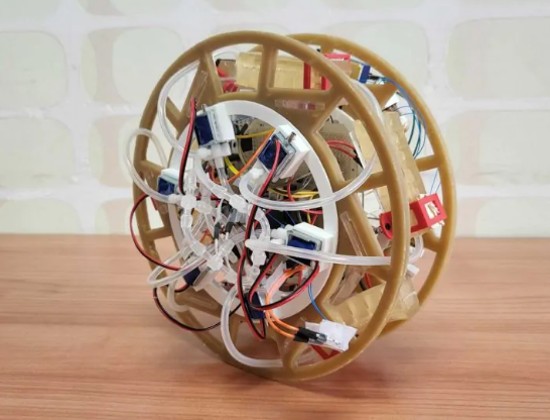
The world today is awash with plastic pollution and we are trying to get a handle on the challenges this represents. But another form of pollution is electronic waste. So what if the technology we rely on can also be eaten when it is no longer needed?
As I researched this topic I was thinking about the home phone we currently have and its replacement which I just ordered. The current phone includes a base station and two remote handsets with plug-in bases. That’s a lot of garbage that I have to find a way to recycle through the local electronic waste program here in our new hometown, Oakville. But not every locale has electronic recycling programs which usually means the stuff ends up in basements, attics, or landfills. In the case of the latter, the components contained within can leach pollutants into the surrounding environment.
That’s what intrigued me when my online search results pointed me to the Istituto Italiano di Tecnologia (IIT), located in Genoa. It has recently begun a project to make technology edible. It calls the project RoboFood and involves creating edible batteries, circuit boards, drones and more.
Most of us cannot contemplate eating our smartphones after they no longer can carry a charge. But what if it was possible to have a phone containing no toxic materials that humans or animals can consume either accidentally with no ill effects, or on purpose?
Dario Floreano, Director of the Laboratory of Intelligent Systems at the Swiss Federal Institute of Technology Lausanne in Switzerland has been following the work being done at IIT and sees advantages in building edible robotics that are biodegradable and nutritious.
Floreano notes, “Ordering your pizza and having it delivered in a few minutes by a drone…could soon be routine. But what about having the drone itself for dessert, instead of sending it back?”
He doesn’t mention the cardboard box pizzas come in, a particular bugbear of mine. Those large, flat boxes cannot be recycled like other paper-based containers because of stuck-on-cheese, oils and other residue. I hope the IIT comes up with a pizza box we can eat as the RoboFood project unfolds.
How Realistic is This IIT Aspiration?
It certainly would solve one of the problems our modern world faces from growing piles of electronic waste that often involve complex recycling methods to separate and recover different materials found in devices.
The initial results at the RoboFood Project are encouraging and include:
- a gelatin-based rechargeable battery (GelBat).
- a partially edible drone used for transporting food and medicine.
- an edible tilt sensor to be used in robots, as of yet still not edible.
What’s in these edible electronics? They are made up of food-grade gold electrodes combined with ethyl cellulose, activated carbon, beeswax, and sunflower oil. The casings are made from gelatin and gummy bears for those of you with a sweet tooth.
The robot wheel seen at the top of this posting is 36% edible. What’s not are some of its logic circuits, wires and actuators. The RoboFood Project team hopes through the building and demonstration of products like the wheel that it will encourage present and future electronics designers to incorporate biodegradable and edible materials in their products.
At a recent IEEE meeting, Valerio Annese of RoboFood won an award for his presentation entitled “Eat, Test, Digest: Diagnostic Food for Next-Generation Gastrointestinal Tract Monitoring.” It showed a digital camera for endoscopies and colonoscopies that could be swallowed, do its job and then be digested.
So now imagine a few decades from now when the edible electric vehicle (EV) you are driving runs out of juice and you are marooned in a remote area. No worries. You won’t starve. You can just eat the damn thing!








